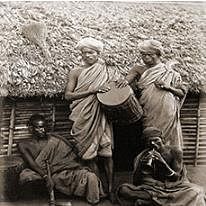Test: Static Geography of India and World- 2 - Class 8 MCQ
10 Questions MCQ Test - Test: Static Geography of India and World- 2
Reshuffle the letters to get the name of an animal that lives in groups in Kalahari desert in Southern Africa and is famed for its upright posture.
The Murray-Darling River System is an important river system of which country?
These sarees from Patan, Gujarat, are made using fine silk yarns. They are traditionally woven by the salvi community, and involve a complex from of weaving. What is the name these sarees?
Which of the following countries are connected by Mont Blanc tunnel?
Read the passage and answer the questions:
The Hawaiian Islands are volcanic in origin. The big island has five major volcanoes Kilauea, Mauna Loa, Mauna Kea, Hualalai and Kohala. These volcanoes primarily erupt a lava which solidifies into a type of rock known as basalt.
Among the five volcanoes stated in the passage, which is one of the most productive volcanoes present on Hawaiian Island?
Cities which are not situated on the banks of river Ganges are
The very mention of the Middle-east brings desert landscapes with sand dunes to mind. But these is one country in this region that does not have any deserts in it. Name that country.
Rearrange the jumbled letters to find the name of the longest river in southeast Asia which flows through China, Laos, Thailand, Cambodia and Vietnam before emptying into the South China sea.
This tribe is chiefly found in Tamil Nadu and Palakkad district of Kerala. In recent times they help in catching snakes and collect the snake venom. These tribals also work as fishermen, and as labourers in the rice fields at the time of sowing and harvesting or in the rice mills. Who are they?

The purchased of this territory from Russia by the USA for a few cents per acre was known as 'Seward's Folly' after the man who negotiated it. It later turned out to be a very mineral-rich territory. Which territory are we talking about?



















